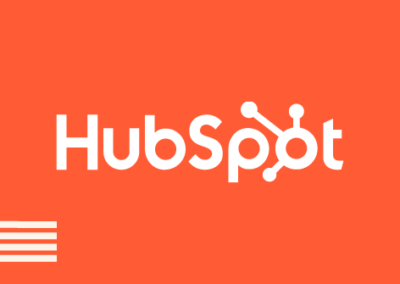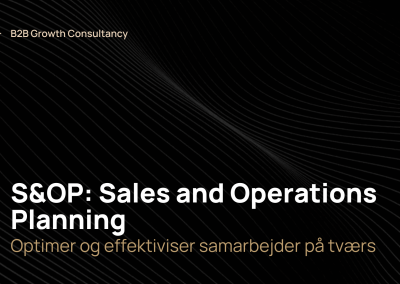It’s crucial to know your target audience in depth. Personas are a powerful tool for creating accurate and detailed descriptions of your ideal customers, also known as ICP. In this article, we will guide you step-by-step through the creation of personas and give practical examples of how they can be used in practice.
What are personas?
A persona is a description of your ideal customer based on demographics, age, title, etc. It’s used for different purposes, but the common thread is to clarify your message and approach to potential customers.
Personas are fictional characters that represent a specific target audience within your market. A persona is created from demographic data and various information about your potential customers. The persona gives you a visual picture of your target audience so you can better understand their needs and desires and tailor your messages to their specific needs.
To clarify what a persona is, the difference between personas and audiences is highlighted here:
- Personas are individual characters with unique characteristics, while audiences describe broader segments of people.
- Personas help create empathy and deeper understanding of users, while audiences are primarily used to identify market segments.
Why personas are important for your business
As a business, there are many benefits to using personas. Below you can get an overview of some of the most important ones.
Improves customer knowledge and understanding:
- Personas provide a description of your ideal customers so you can gain deeper insights into their needs and wants.
- By having a clear picture of your personas, you can create more targeted and personalized communication with your leads and customers.
Allows for more targeted marketing:
- With personas, you can tailor your marketing to specific demographic groups and increase your chances of reaching the right people.
- You avoid wasting resources trying to reach everyone when you focus on the most relevant segments.
Increases the effectiveness of sales and marketing activities:
- With clear personas, your sales and marketing team can better identify potential leads and target their activities towards them in sales and marketing processes.
What to include in personas?
To create effective personas, include information about the challenges and goals of the target audience, as well as their job title and responsibilities. It’s also important to identify their needs and wants to ensure your CRM system meets their expectations.
Challenges and goals
Understanding your audience’s challenges and goals provides insight into how you can help them solve their problems and achieve their goals. When creating a persona, it is therefore important to identify pain points in existing processes. This can help identify areas that need improvement and optimization – that your product/service can help with – which is essential in your sales strategy.
Job title and responsibilities
Once you’ve figured out what needs you’re solving, you need to figure out who you’re solving it for. Is the problem you’re solving a problem that the marketing manager, product manager or CEO is facing? Knowing job titles and responsibilities allows you to segment for these individuals on LinkedIn and/or their website. By also including the needs and wants, you get a more complete picture of the persona, resulting in a more effective sales strategy.
By addressing this, you can create relevance in your messaging and approach to this particular person, increasing the chance of gaining them as a customer.
Step by step: How to create a persona
When creating a persona, you need to go through the following steps:
- Gathering extensive research and data on your target audience.
- Segment your audience into smaller groups based on their needs, industry and behavior.
- Creating detailed personas focusing on their demographic information, such as age, gender and geographic location.
1. research and data collection
Analysis of existing customer data:
- Review detailed customer information to identify trends and patterns in behavior and preferences – with your existing customers.
Market research and questionnaires:
- Conduct extensive research to gain insight into the market, competition and potential buyers’ needs.
Observation of customer interactions:
- Monitor direct interaction between you and your customers to discover key insights about their wants, challenges and expectations.
2. Segmenting the target audience
Identifying common characteristics among potential customers is crucial for target group segmentation. By dividing them based on their needs or behavioral patterns, you can better customize your marketing and sales efforts.
Segmentation allows you to identify the key characteristics of each customer group and develop specific strategies to meet their needs and solve their pains. This leads to more effective communication, product development and targeted marketing efforts. By putting a face to each persona, it becomes easier for you to engage in meaningful dialog with your potential customers.
3. Creating personas
When creating personas, it’s important to create a detailed description with a realistic name, a suitable image and a believable backstory. This helps you visualize your target audiences better.
Persona template
Below is an example of a persona for a software company that sells a SaaS solution for private investors in unlisted companies that can help keep track of funding, growth and communication with potential buyers.
About Jakob
Name: Jakob Hansen
Age: 49 years old
Marital status: Married with no children
Position: Private investor
Experience: Former CEO of a startup that ended up going public on NasdaQ
Need
Jakob wants to spend time, effort and money on developing and helping companies grow to exit in the foreseeable future.
Jakob, would also like to seek new investment opportunities.
Challenges
Jakob spends too much time on administration. He has an edge to him. to sell his investments as he wants to enjoy life after a few years in the fast lane.
Motivation
Jakob is driven by growth, development and freedom. He is a social person, but loves his focus on growing businesses.
The above is an example of a persona that can help you better understand your ICP and target your messages with razor-sharp precision.
How to use personas in practice
As mentioned, a persona can be used in many different contexts. However, everything has a common thread: getting better at communicating your messages, USPs and targeting your customers more effectively.
Customization of communication and marketing
Targeting messages to different personas is essential for effective communication. By identifying and understanding each persona, you can tailor your messages to hit the exact pain points your potential customers are dealing with.
It’s also important to identify relevant channels for each persona, as this ensures that the message is seen. With a sharp persona that ensures you’re touching the right audiences and channels, you’re well on your way to successful marketing and sales.
Product development and improvement
Gathering feedback from different personas is essential for product development and improvement. By listening to each persona’s needs and wants, you can tailor your products and optimize them based on their specific requirements. This ensures you deliver a solution that truly meets your customers’ individual needs.
Sales and customer support
Creating effective sales funnels tailored to each persona
The first key to success in sales and customer support is to create effective sales funnels tailored to each persona. By identifying the different segments of your target audience and creating unique processes for each, you can guide potential customers through the buyer’s journey in a more personalized and relevant way.
“Persona-driven” support information and materials
To provide the best possible support, it’s crucial to have “persona-driven” support information and materials. This means that your resources need to be specifically designed to meet the needs of the different personas in your target audience. By providing targeted content, you can help your customers quickly and easily solve their problems or find answers to their questions.
Succeed with inbound marketing using personas
To succeed with inbound marketing, it’s important to understand what your customers are looking for. The best tool for this is to create a persona. As discussed earlier, this gives you a better insight into their issues and more.
Once you’ve identified your personas, you can tailor your communication in a way that speaks directly to them. By delivering content and messages that are relevant to each persona’s specific interests and challenges, you’ll achieve greater engagement and build trust with your potential customers, ensuring you’re remembered.
An essential part of inbound marketing is understanding what motivates your potential customers. Using personas, you can dive into different motivational factors such as the need to save money or the desire to innovate. This insight allows you to customize your content and marketing in a way that appeals directly to these motivations and hits what they are searching for.
Get to know your audience better with Radiant
At Radiant, we’ve implemented over 100 HubSpots, which is why we’ve also created countless personas and segmentations based on tech stack, demographics, key figures, words on websites or annual reports, and titles on LinkedIn.
We do this through Sales as a Service and HubSpot as a Service, where the purpose is to grow your business.
Through Sales as a Service, Radiant represents your business. We help you build pipelines and win deals – we’ve done this for more than 20 companies and won more than 55 million ARR. All from HubSpot, where automated follow-ups, intelligent segmentation and streamlined communication between us and your ICP is possible in an easy and efficient way.
At HubSpot as a Service, we help you capitalize on your current investments in sales, marketing and customer service. We do this based on best practices from more than 100 HubSpot implementations and the experience that companies struggle to streamline communication and data between departments.
For both services, a persona is one of the points we need to check together to succeed in creating a sustainable pipeline and satisfied customers for you and an efficient HubSpot that supports it.



